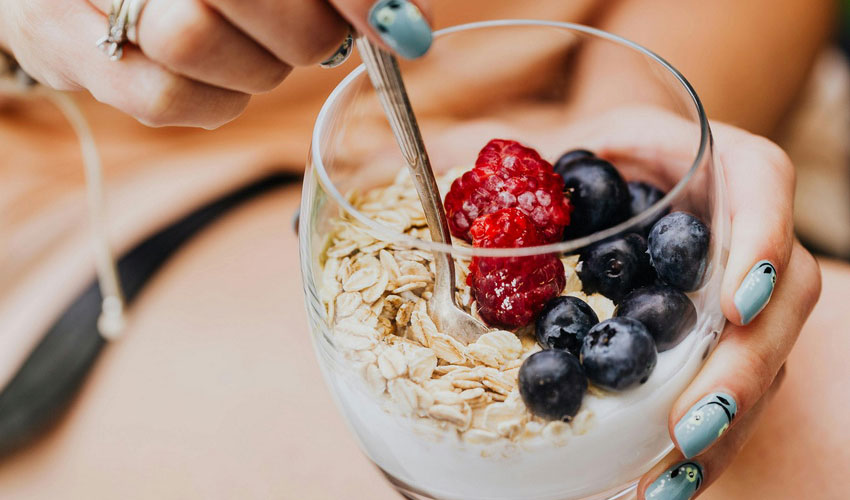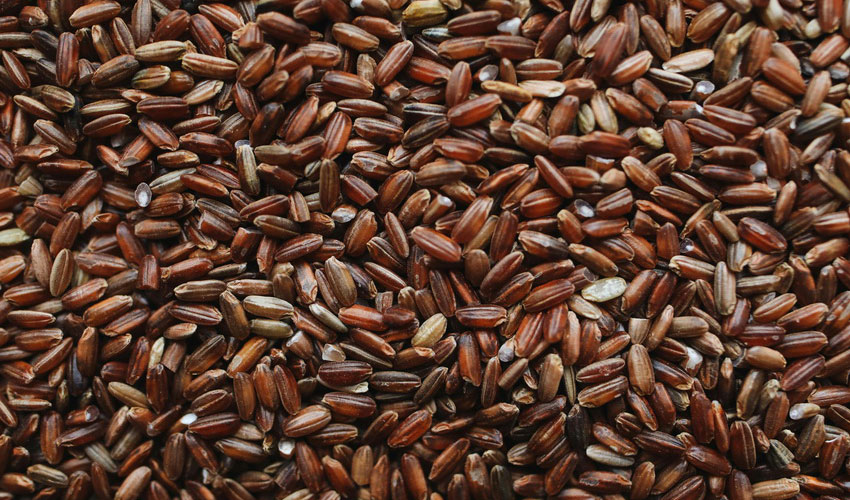8 Nutrient-Packed Whole Grains for Type 2 Diabetes Prevention & Management
Switching from simple to complex carbs is like trading in a beat-up old car for a sleek, high-performance sports car. Not only does it help keep your blood sugar stable, but it also revs up your weight loss and puts the brakes on heart health issues. It's a no-brainer, really. You see, those refined, simple sugars are like little sugar bombs that explode in your bloodstream, causing energy crashes and wreaking havoc on your body. On the other hand, complex carbohydrates, like whole grains, are like slow-release powerhouses that keep your blood sugar in check and give you long-lasting fuel.
Why are whole grains so magical? Well, part of it is their fibre content. Fibre is like the traffic cop of your digestion, slowing things down and keeping everything running smoothly. And when it comes to whole grains, they not only keep your blood sugar steady, but they also help you stay trim and keep your heart healthy. In fact, scientific studies have shown that people who regularly eat whole grains have a lower risk of type 2 diabetes. And if that's not enough, they also have a decreased risk of heart disease. It's like a two-for-one deal that you can't pass up.

So, if you want to be a carb connoisseur and take control of your health, ditch those refined grains like white rice and pasta and dive headfirst into the wonderful world of whole grains. Your blood sugar, waistline, and heart will thank you. Just remember to listen to your body and consult with your doc before embarking on any major dietary changes. Now, let's get this whole grain party started with the following foods!
Bulgur
Diabetes specialists suggest that alternate whole grains, like Bulgur wheat, may have a role to play in the diabetes diet by substituting simple, refined carbohydrates. They even speculate that switching from white rice to whole grains could potentially decrease the risk of diabetes by a whopping 36%, as per one study's researchers. A single cooked cup of Bulgur provides a hefty dose of fibre at 8.2 grams, which accounts for 32% of the Daily Value (DV), and packs 33.8 grams of carbs, according to the USDA. Don't sweat it, though - its Glycemic Load (GL) is just 21, as per The University of Sydney.
Buckwheat
By choosing Buckwheat flour instead of regular white flour for baking, you can get a big boost to your soluble fibre content, an important consideration in a diabetes diet. “One of the most important qualities of soluble fibre is its ability to help regulate blood glucose levels,” says Steven Joyal, MD, chief medical officer for Life Extension based in Fort Lauderdale, Florida. “It slows the rate at which glucose is metabolised and absorbed from the intestines.” One study found that eating a breakfast with buckwheat improved glucose tolerance through lunchtime. According to the USDA, ¼ cup of Buckwheat flour — baked goods can be a great way to enjoy this whole grain — has 3 g of fibre for 11% of the DV, 1.4 mg of iron for 8% of the DV, and 22 g of carbs. Buckwheat has a medium GL, and a slice of buckwheat bread has a GL of 10, according to The University of Sydney.
Barley
Barley doesn't just bring good vibes; it's also a fibre-fuelled superhero for pople with type 2 diabetes. A cup of cooked pearled Barley packs a punch with 6 grams of fibre, representing about 21% of the Daily Value (DV), and boasts 44 grams of carbs, according to the USDA. In one study, munching on bread made from barley kernels for three square meals over three days worked wonders, improving metabolism, insulin sensitivity, appetite control, and even reducing blood sugar and insulin levels. Researchers credited Barley's fibre for boosting gut bacteria and unleashing helpful hormones. Plus, pearled Barley keeps it cool with a medium Glycemic Load (GL) of around 15, as per The University of Sydney.

Wheat Berries
Wheat berries aren't just your run-of-the-mill wheat; they're the whole shebang, unprocessed and ready to rock your diabetes diet. These versatile little kernels can be the star of the show in all sorts of dishes. You can serve them up as a side dish, whip them into a breakfast sensation like oatmeal, or give your salads some nutty flair by tossing them in. According to The University of Sydney, Wheat Berries have a medium Glycemic Load (GL) of around 19, and a ¼-cup serving boasts 32 grams of carbohydrates and 6 grams of fibre, making up about 21% of the Daily Value (DV), as confirmed by the awesome folks at Bluebird Grain Farms.
Quinoa
Quinoa, the hip and happening super-food on the block, is not your average grain. It's actually a powerhouse seed packed with protein and fibre. If you're new to this trendsetter, it comes highly recommended by Webb as a delicious side dish. According to the USDA, a 1-cup serving of Quinoa serves up 39 grams of carbs, 5 grams of fibre (18% of the DV), and a solid 8 grams of protein. The University of Sydney gives it a high Glycemic Load (GL) score of 23. Dr. Joyal assures us that the fibre in Quinoa can work wonders for our appetite control. As he puts it, "Fibre adds bulk to your diet, so it helps you feel full and more satisfied. You are less likely to overeat." And hey, who doesn't want to be in charge of their hungry cravings, especially when trying to stick to a diabetes-friendly diet? If the taste of Quinoa seems a bit too out there for you at first, Malinowski suggests mixing it into rice as a gentle way to ease into the Quinoa experience.
Farro
Move over brown rice, there's a new hip ancient grain in town! According to the Mayo Clinic, this grain is just as nutty as your weirdest cousin and has a striking resemblance to brown rice. But don't let its unassuming appearance fool you, because this ancient grain can be cooked up like a fancy risotto. Michigan State University even claims it's a breeze to toss into stews, casseroles, and salads, making it the ultimate versatile player in your kitchen squad. But it's not just about its culinary acrobatics as this grain is also a nutritional powerhouse! Packed with fibre, iron, protein, and magnesium, it's like an all-inclusive vacation for your body. Iron, as the NIH tells us, is the champion of growth and development, and it even helps your body deliver oxygen to all those nooks and crannies. Here's the scoop: one measly ½-cup serving of cooked Farro boasts a solid 7 grams of fibre, which is a whopping 25% of your daily value. Not too shabby, huh? And let's not forget about the 7 grams of protein and 37 grams of carbs that come along for the ride. This Farro is definitely not messing around when it comes to fuelling your body. Now, let's get scientific for a hot second. RD extraordinaire Erin Palinski-Wade spills the beans and tells us that Farro sports a glycemic index of 45. Translation: it won't send your blood sugar levels on a rollercoaster ride. In fact, it boasts a medium glycemic load of 13.5. So go ahead and enjoy this ancient grain goodness without any fear of sugar crashes messing up your day. In a nutshell, Farro is the golden ticket to a well-rounded, nourished bod. It's got the looks, the taste, and the nutrients to back it up. So why not let this ancient grain take centre stage in your culinary adventures? Who knows, it might just become the brown rice's trendier, smarter cousin.
Oats
Ros, the wise food guru, declares that Oats are the holy grail of fibre-filled delicacies. These magical grains possess the power to keep your blood sugar in check. No wonder they have become a beloved choice for diabetics looking to tame their sugar monsters. And you know what the best part is? Including Oats in your morning routine is a piece of (Oat)cake! According to the trustworthy USDA, gobbling up half a cup of cooked Oatmeal for breakfast is equivalent to consuming a generous ounce of whole grains. That humble serving packs a punch of 14g of carbs, accompanied by a delightful 2g of fibre, providing you with a respectable 8% of your daily value. Now that's what I call a fibrelicious deal! A bunch of smarty-pants researchers conducted a thorough investigation, known as a systematic review and meta-analysis. They delved into 14 trials and not one, but two, observational studies. And guess what they found? The Oat gods blessed us once again! Oat intake proved to be a true game-changer for people with diabetes, slashing A1C levels, fasting glucose levels, and even chipping away at cholesterol. Now, let's get geeky for a moment. The University of Sydney has bestowed upon us a magical number: 12. This delectable figure represents the glycemic load (GL) of Oats, and it's just right! So when you're hunting for the perfect Oats, be a discerning connoisseur and opt for steel-cut or rolled ones. Those instant imposters may be convenient, but they've undergone more processing, resulting in less of that fabulous fibre we crave. Oats are the superheroes we need in our breakfast routine. They'll keep your blood sugar in line, make your taste buds dance, and give your body the fibre it deserves. Don't let those instant oat villains fool you, go for the real deal and reap the delicious rewards!

Brown Rice
Here’s the scoop: a recent study spilled the beans on the link between rice and diabetes. Turns out, chowing down on five or more servings of white rice each week raises your risk of getting diabetes. Yikes! Fortunately the antidote is as simple as can be. Just two servings of Brown Rice each week can actually lower your risk. It’s like a magic trick for your health! Now, don’t go rolling your eyes and thinking it’s too good to be true. The data doesn’t lie. Swapping out just a third of your daily white rice portion with the brown stuff can slash your overall type 2 diabetes risk by a solid 16%. That’s some math even I can get behind. Let’s get down to the nitty-gritty of why Brown Rice is the hero in this story. It’s got a medium GL of 16, which basically means it won’t send your blood sugar on a wild rollercoaster ride. Each half-cup serving packs a punch of 39 grams of carbs, enough to fuel your body with some righteous energy. But that’s not all! It’s also a top-notch source of magnesium, dishing out a respectable 60 milligrams (mg) to keep your muscles, nerves, blood pressure, and blood sugar levels in check. Brown Rice also delivers a healthy dose of niacin, a B vitamin that’s all about teaming up with your nervous system, digestive system, and even your precious skin. You can thank the U.S. Department of Agriculture (USDA) for these juicy nuggets of nutritional wisdom. So, I think the choice is clear. When it comes to managing diabetes and staying in tip-top shape, Brown Rice is the wiser pick. It’s like a golden ticket to lower risks and healthier systems. Bon appétit, and keep that rice game strong!
“The future belongs to nations who have grains not guns.” - Dr. MS Swaminathan






















